Exhibition booklet produced on the occasion of Maria Hassabi’s STAGING: Solo #2 (2017), 9 December 2017 – 21 January 2018, which reimagines and adapts her multi-sited installation STAGING (2017). STAGING was previously exhibited at the Walker Art Center, Minneapolis and in documenta 14, Kassel. This new iteration will feature a lone dancer on an expanse of vivid pink carpet, enacting highly concentrated, protracted, at times barely perceptible movements. Like nearly in all of her works, STAGING: Solo #2 (2017) is a site of negotiation for her powerfully subversive performances: between the performer and their task, the spectacular and the everyday; between subject and object, bystander and viewer. In consistent ways, her pieces undermine media boundaries, clear classifications, and perceptual habits, replacing these with new, not necessarily decipherable images, while activating the viewer’s sensibilities and self-reflection to an extreme degree.
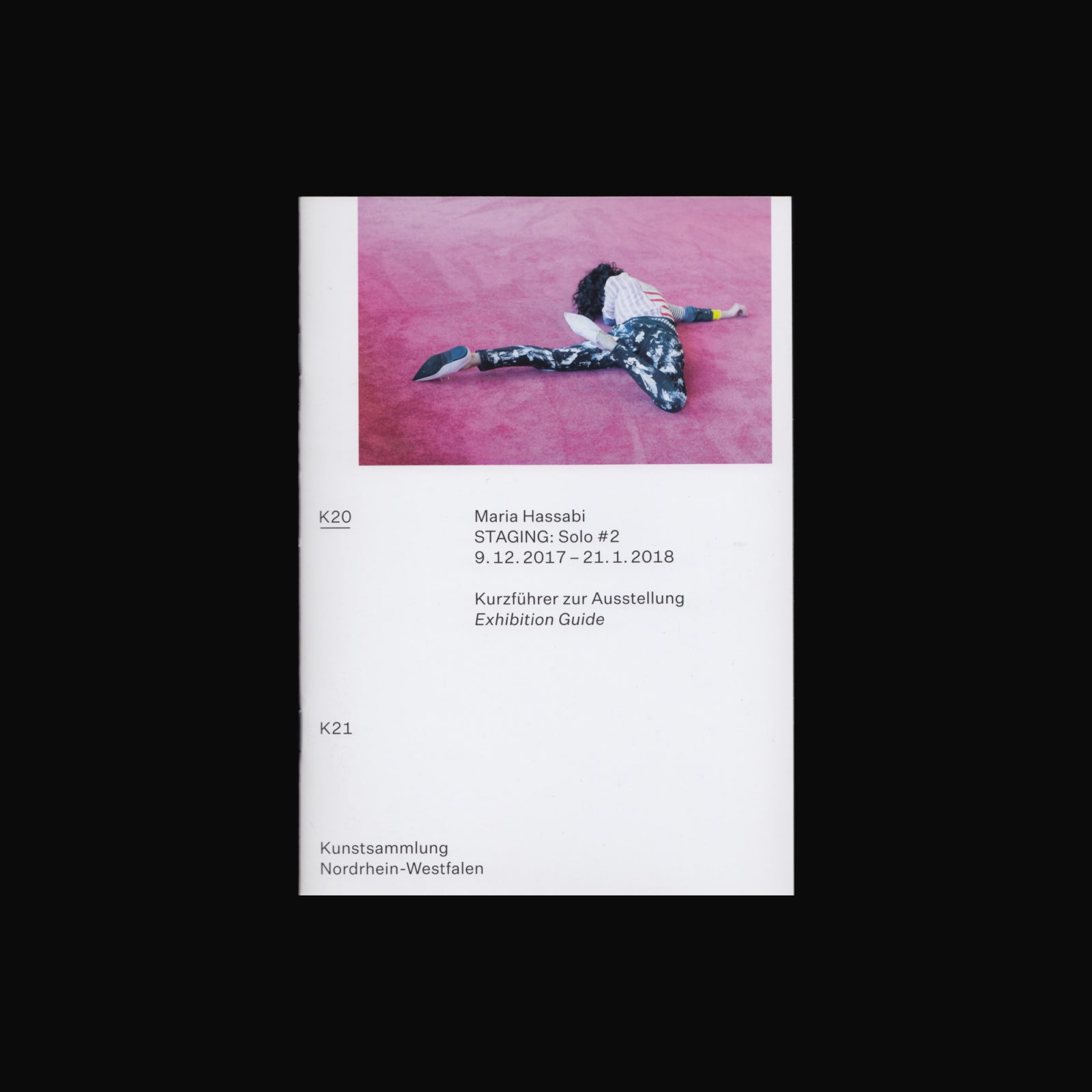
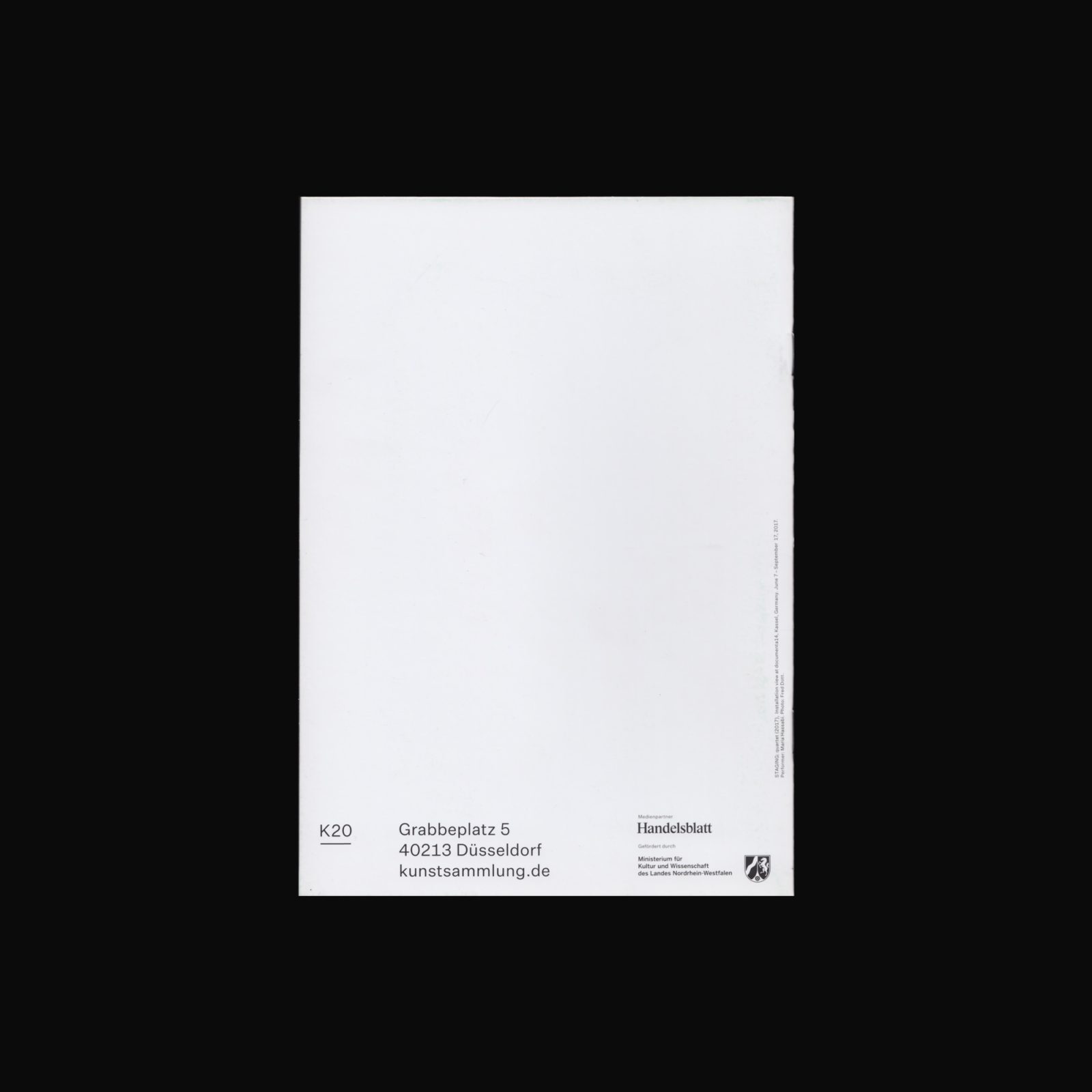
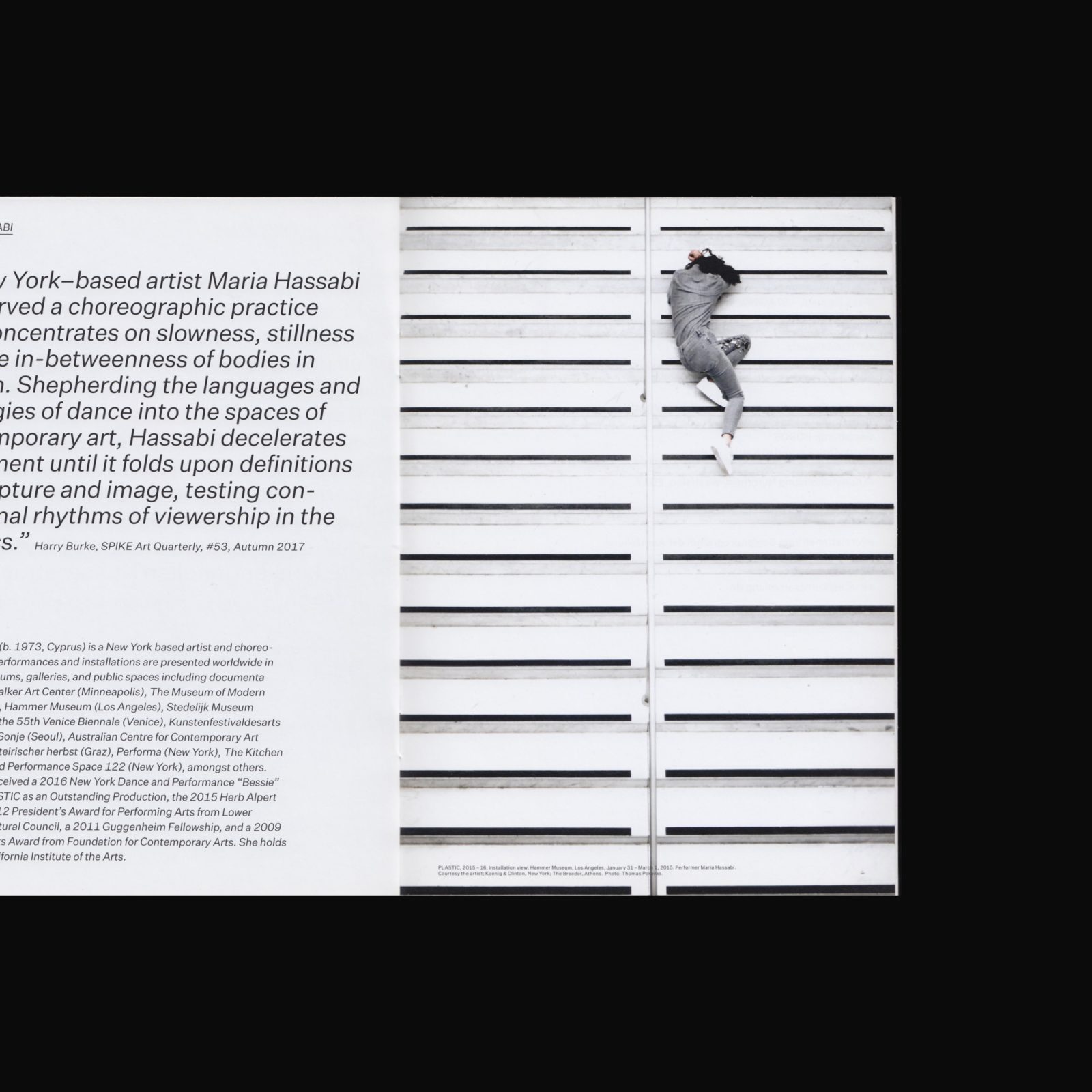

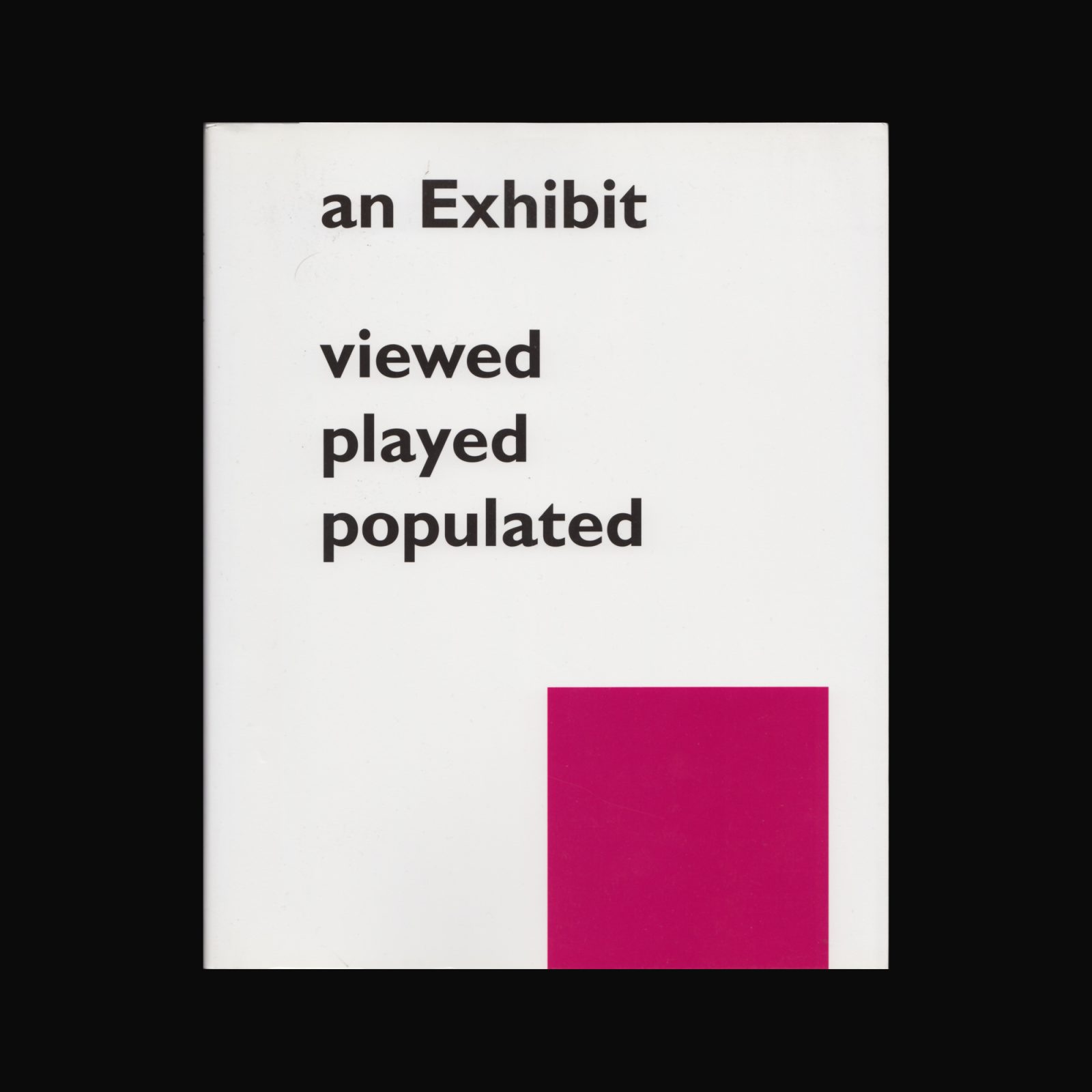

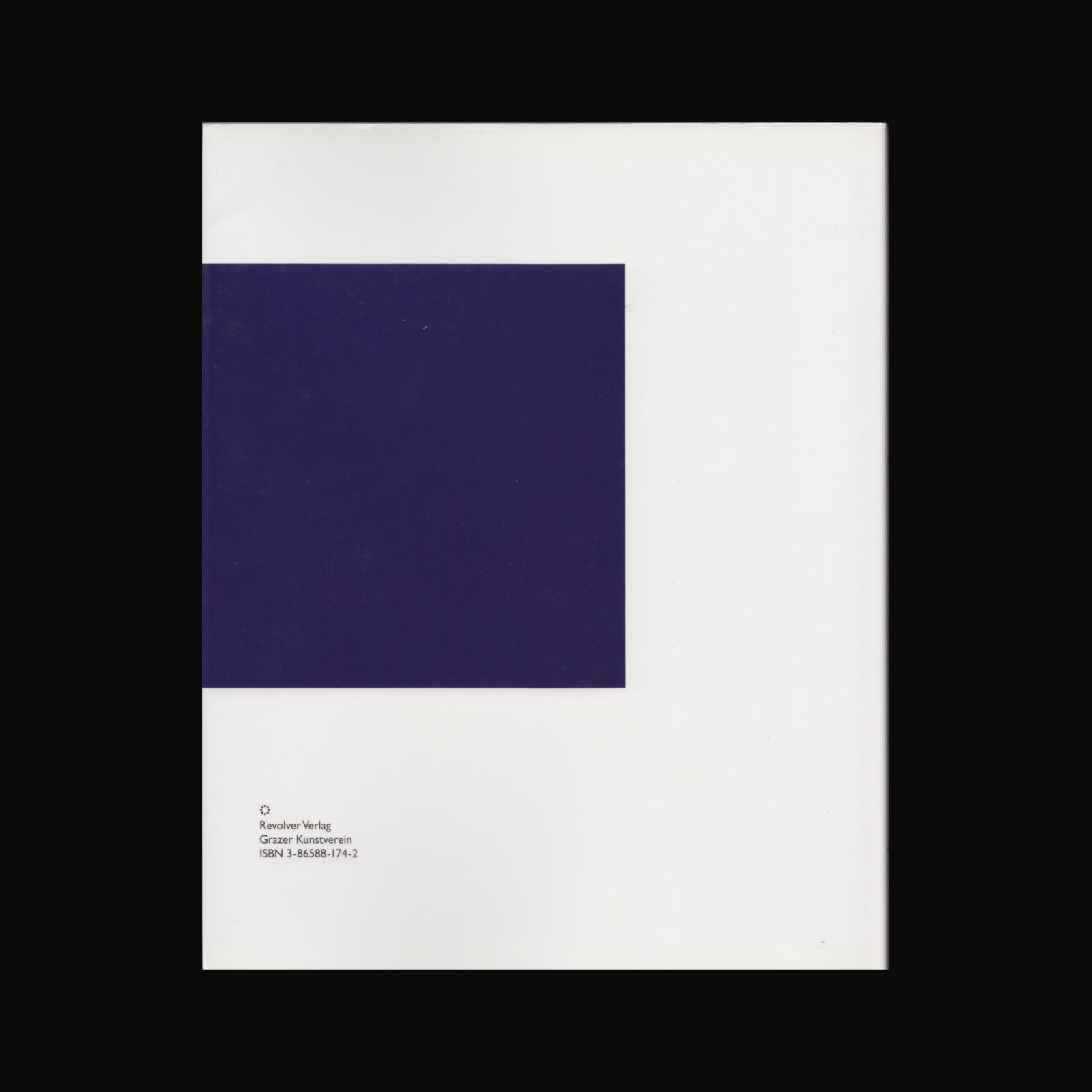
Martin Beck is an artist whose exhibitions and projects engage questions of historicity and authorship and they draw from the fields of architecture, design, and popular culture. A ‘leitmotif’ in Beck’s practice is the notion of display: his works often engage histories of exhibiting and communication formats and, on a material level, negotiate display’s function as a condition of image-making.
His main bodies of works from the 2000s investigated how the modern conception of display developed in the mid-20th century. For his solo exhibition an Exhibit viewed played populated at Grazer Kunstverein, Beck presented works that emerged out of his research on Richard Hamilton’s 1957 an Exhibit in which colored acrylic panels, suspended from the gallery ceiling, created an environment that turned the gallery space itself into an artwork.
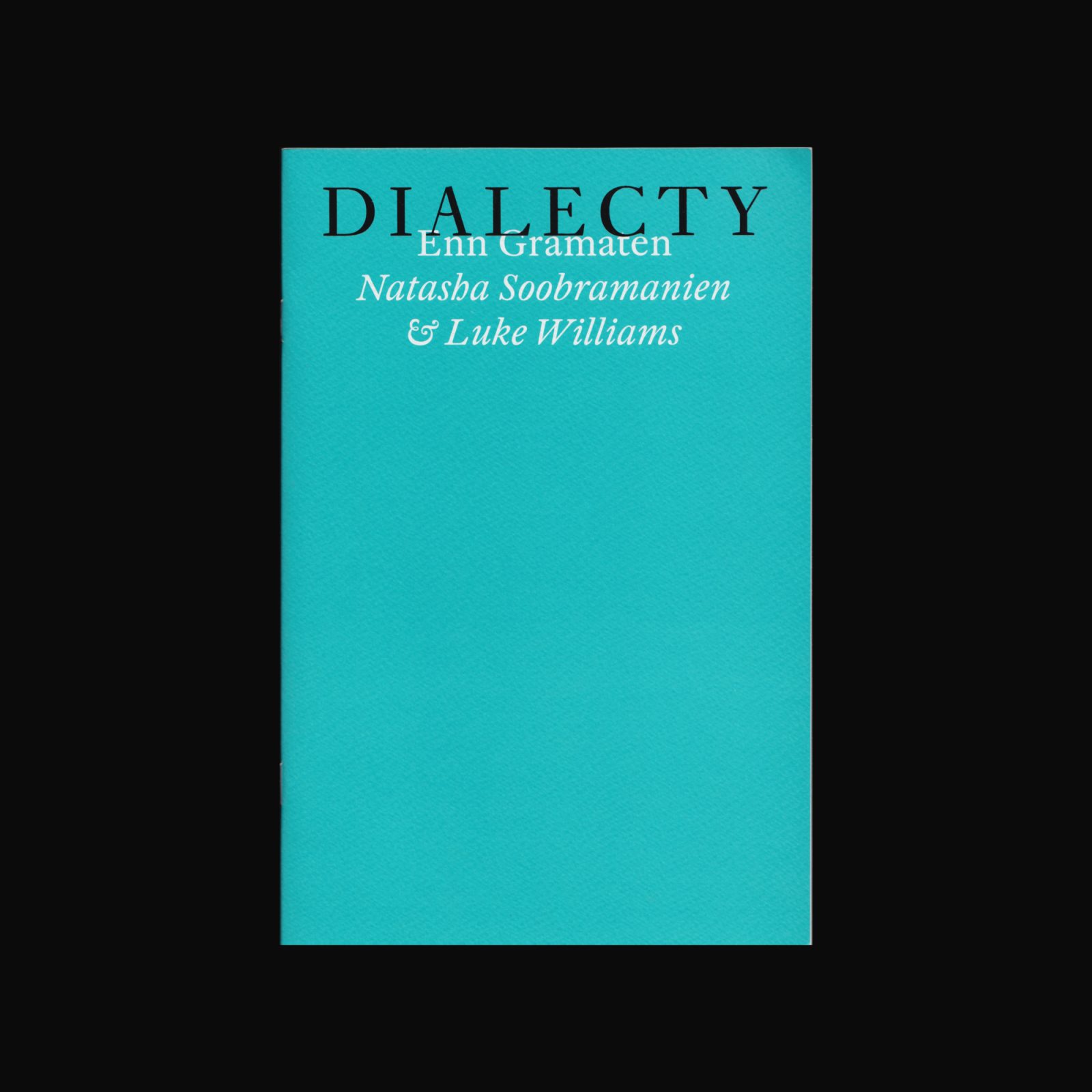
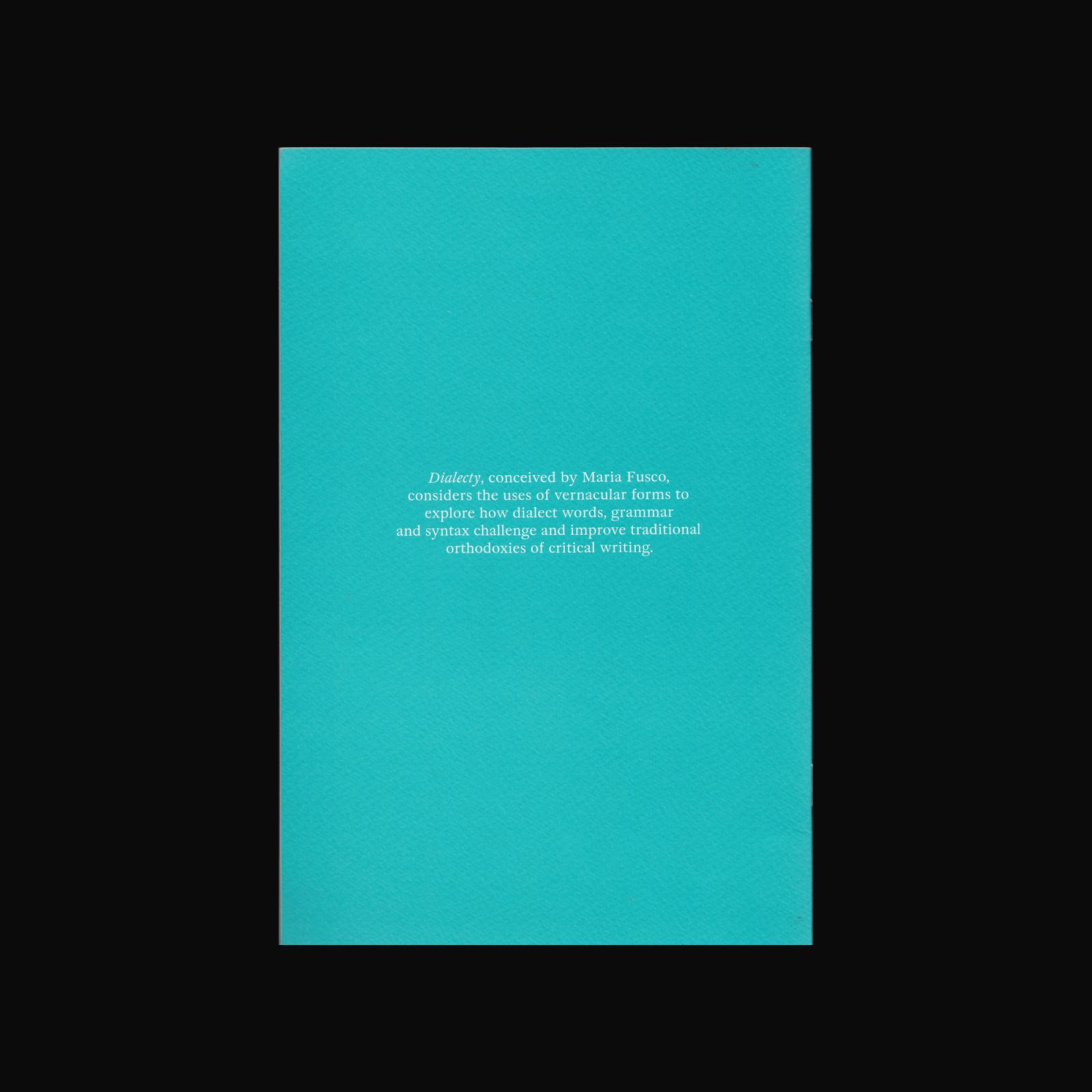
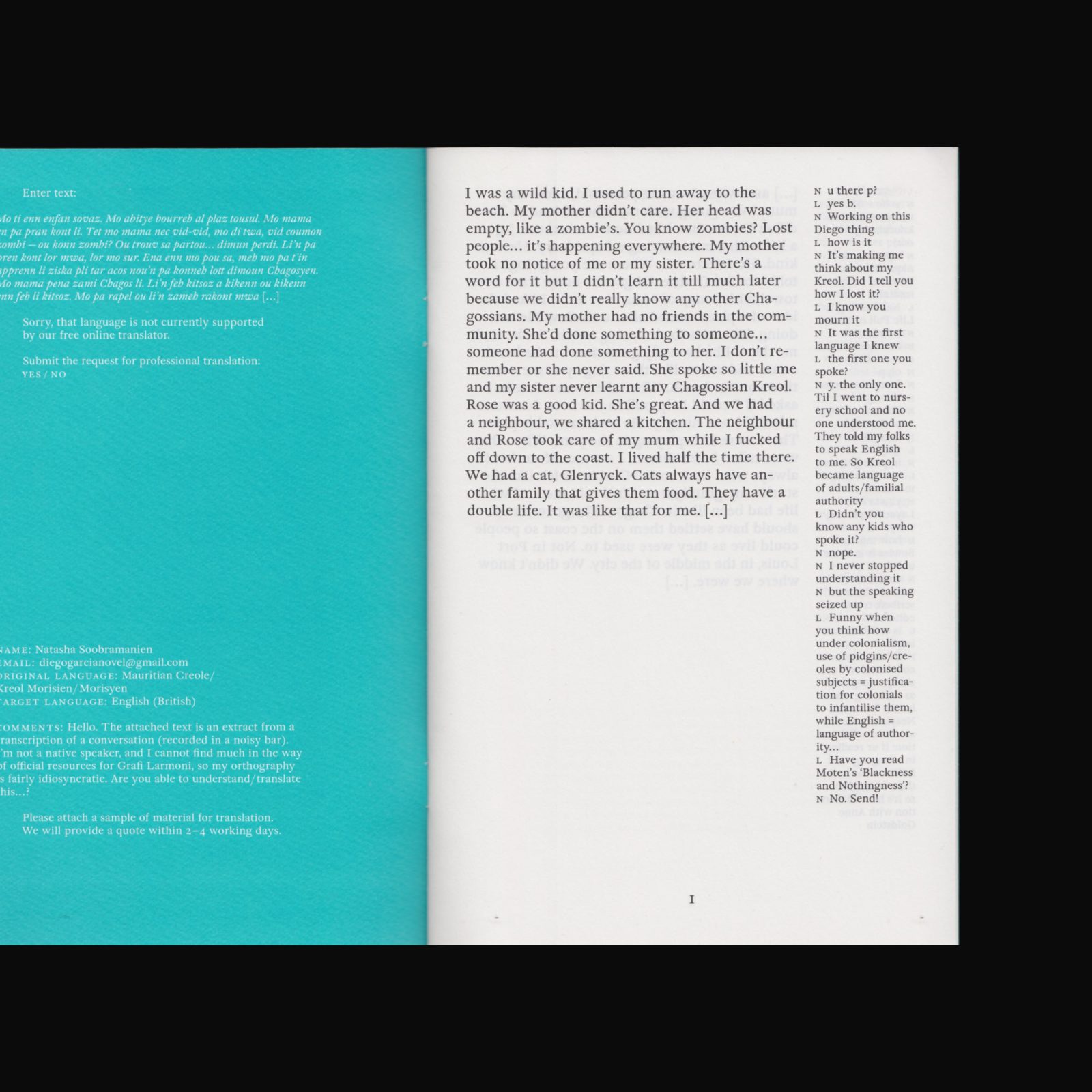
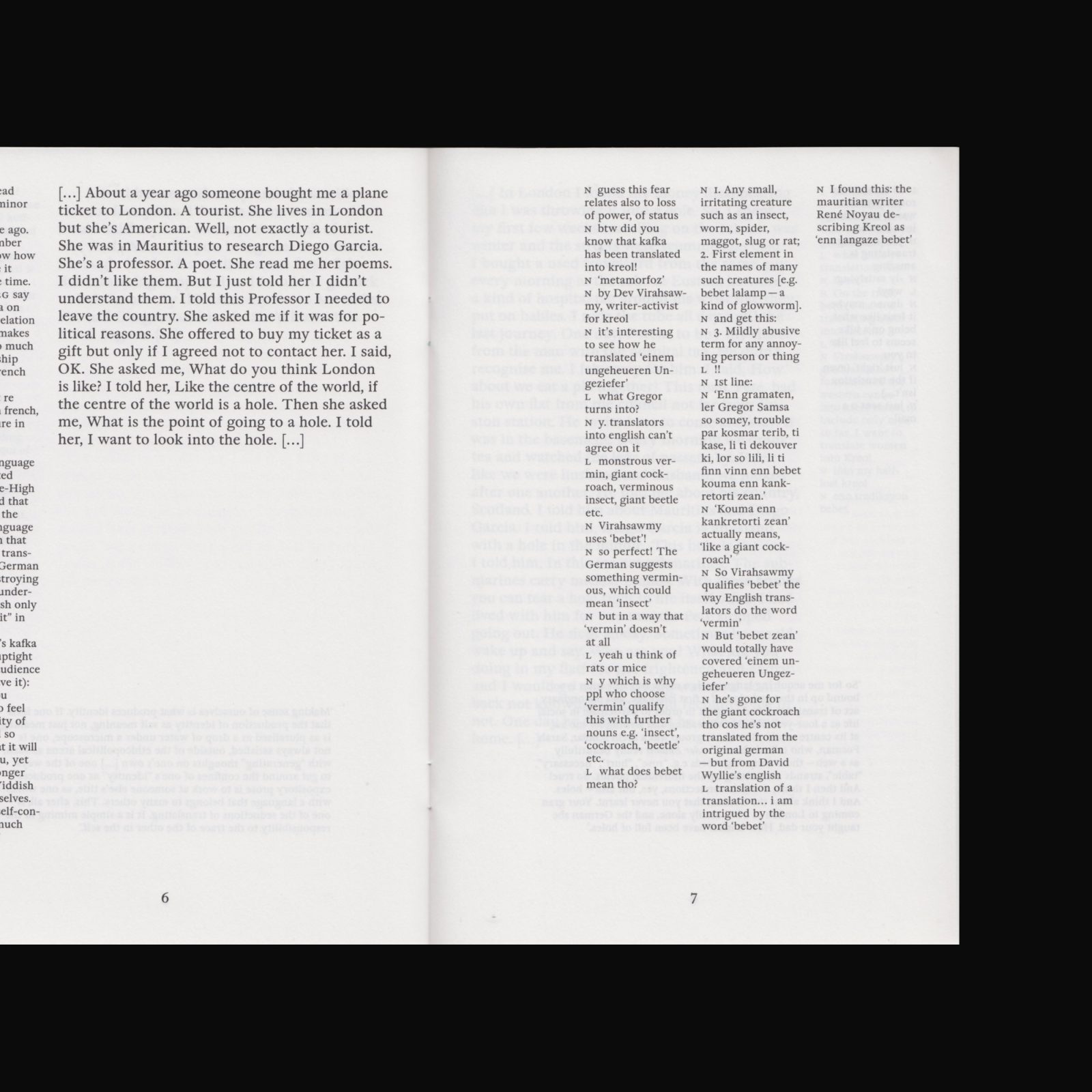
- ‘N u there p?
- L yes b.
- N Working on this Diego thing
- L how is it
- N It’s making me think about my Kreol. Did I tell you how I lost it?
- L I know you mourn it
- N It was the first language I knew
- L the first one you spoke?
- N y. the only one. Til I went to nursery school and no one understood me. They told my folks to speak English to me. So Kreol became language of adults/familial authority
- L Didn’t you know any kids who spoke it?
- N nope.
- N I never stopped understanding it
- N but the speaking seized up
- L Funny when you think how under colonialism, use of pidgins/creoles by colonised subjects = justification for colonials to infantilise them, while English = language of authority…
- L Have you read Moten’s ‘Blackness and Nothingness’?
- N No. Send!’
—Enn Gramaten
A cautionary tale of academic privilege and misadventure in Diego Garcia via a Kreole translation, and parallel live chat.
Dialecty, conceived by Maria Fusco with The Common Guild, considers the uses of vernacular forms of speech and writing, exploring how dialect words, grammar and syntax challenge and improve traditional orthodoxies of critical writing.
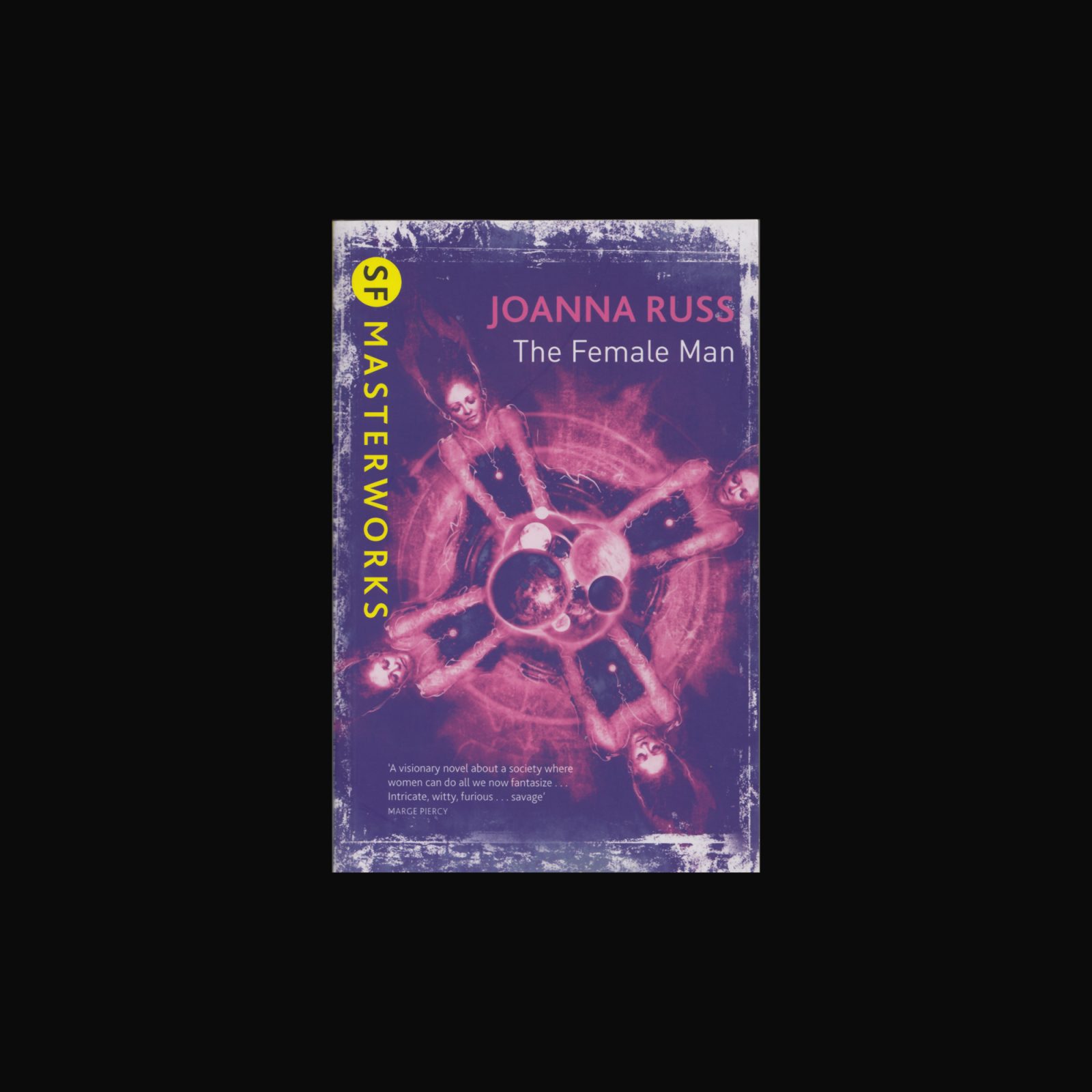
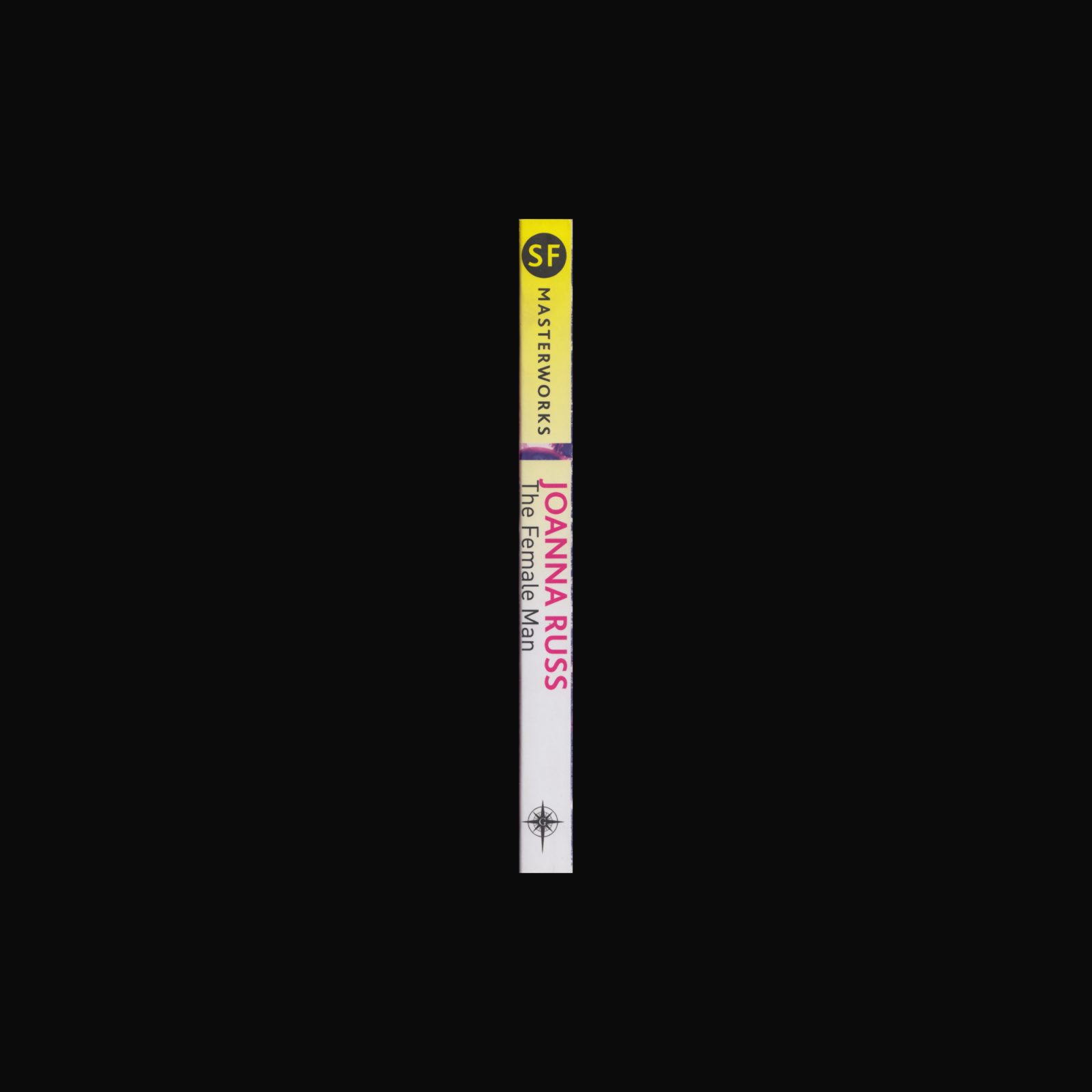
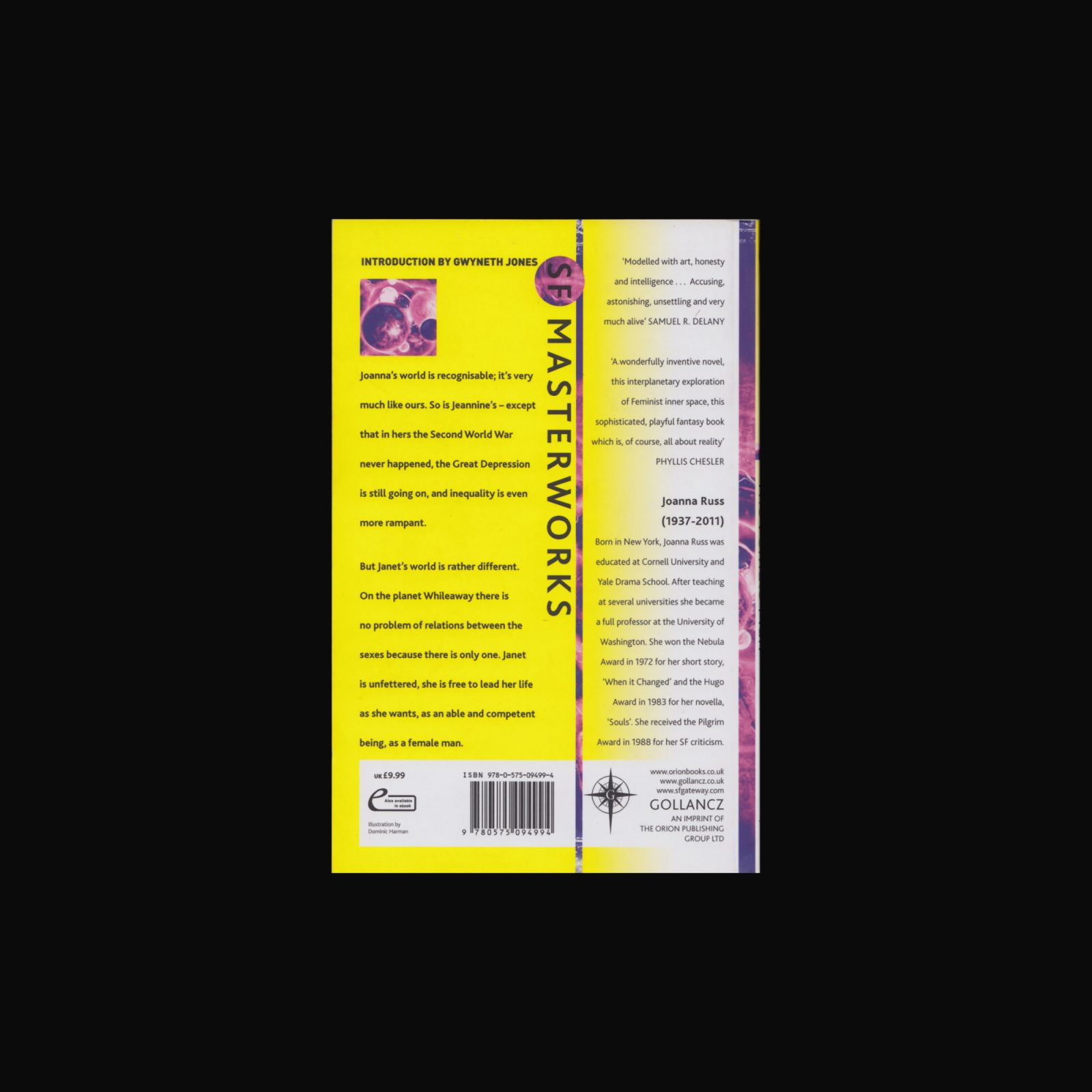
The Female Man is a classic feminist science fiction novel by American writer Joanna Russ, published in 1975. Four women, Joanna, Jeannine, Janet and Jael, live in four different and parallel worlds. Joanna lives in a world similar to 1970s Earth. Jeannine lives in a world where the Great Depression did not end, WW2 never happened, and Japan is still an imperial power. Janet lives in Whileaway, a Utopian society in the far future where men have long since died out in a gender-specific plague. Jael lives in a dystopia where men and women are fighting an enduring and literal battle of the sexes, where women trade children for resources and young boys have cosmetic surgery to resemble women. As the women are transported into these other worlds and meet one another, their perspectives on gender, identity and the societies in which they each live are radically altered.
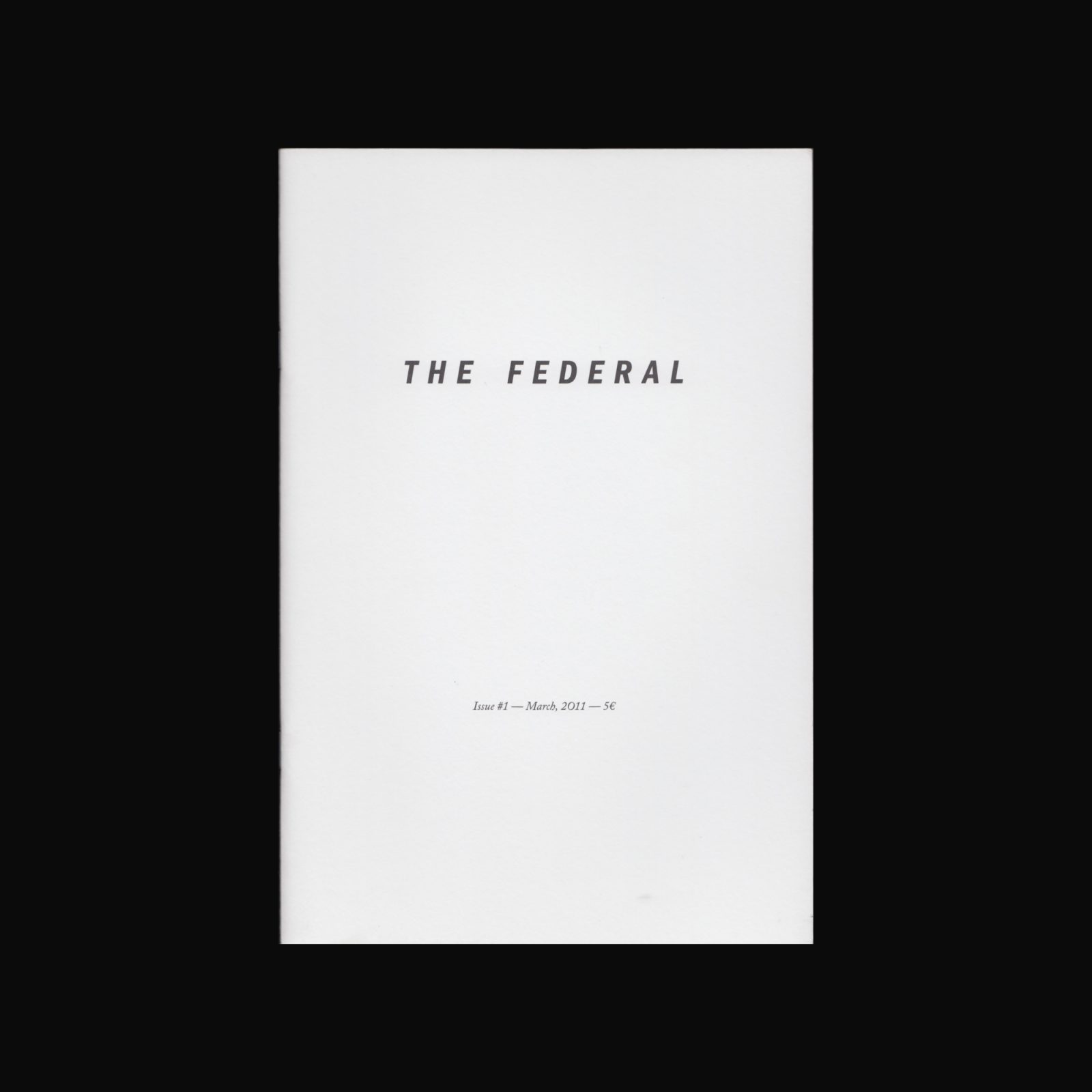

The Federal is a periodical of artist’s writings published by Brussels gallery, Tulips and Roses.
Contributors to this issue: Gintaras Didžiapetris, Graham Harman, Raimundas Malašauskas, Snowden Snowden, Jonas Žakaitis.
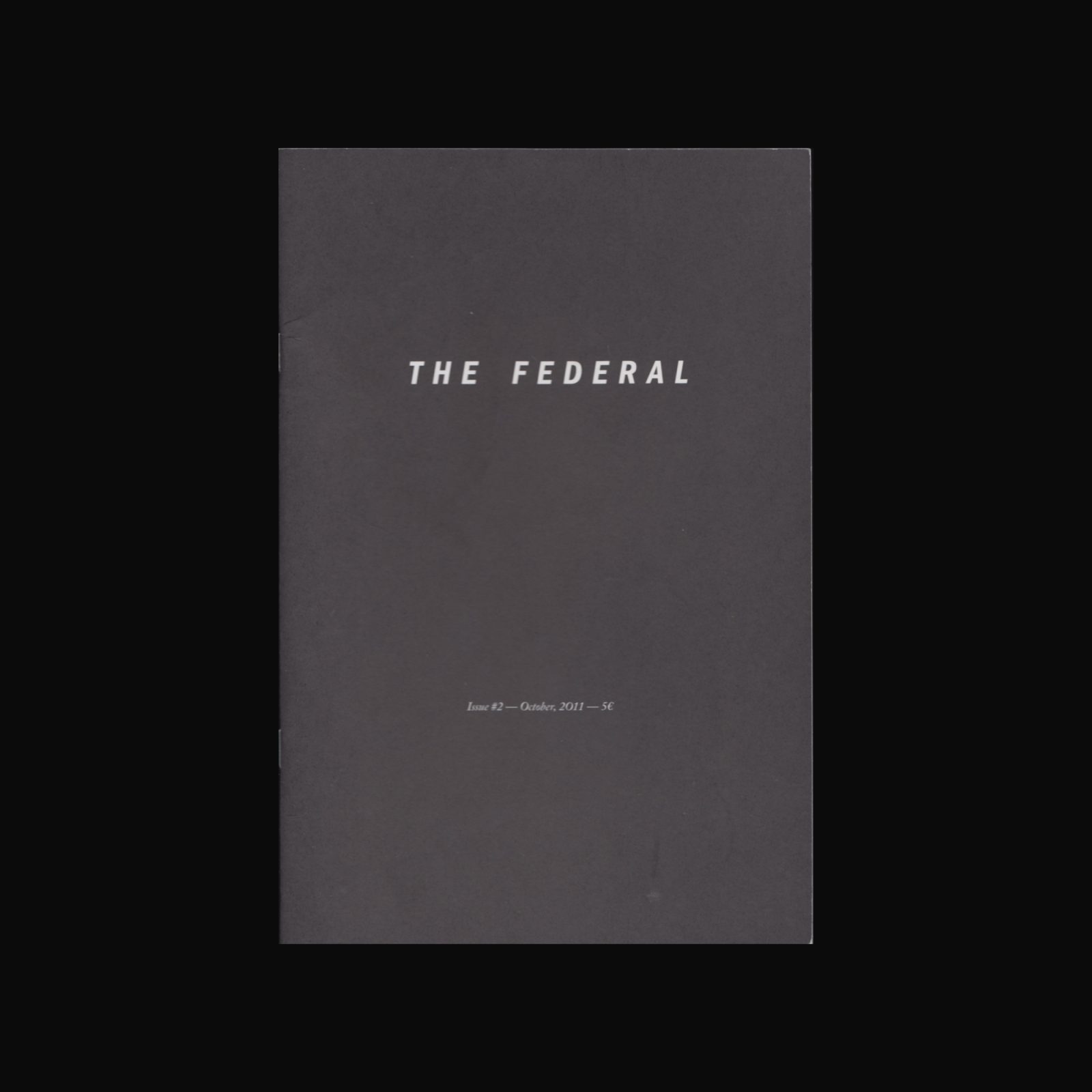
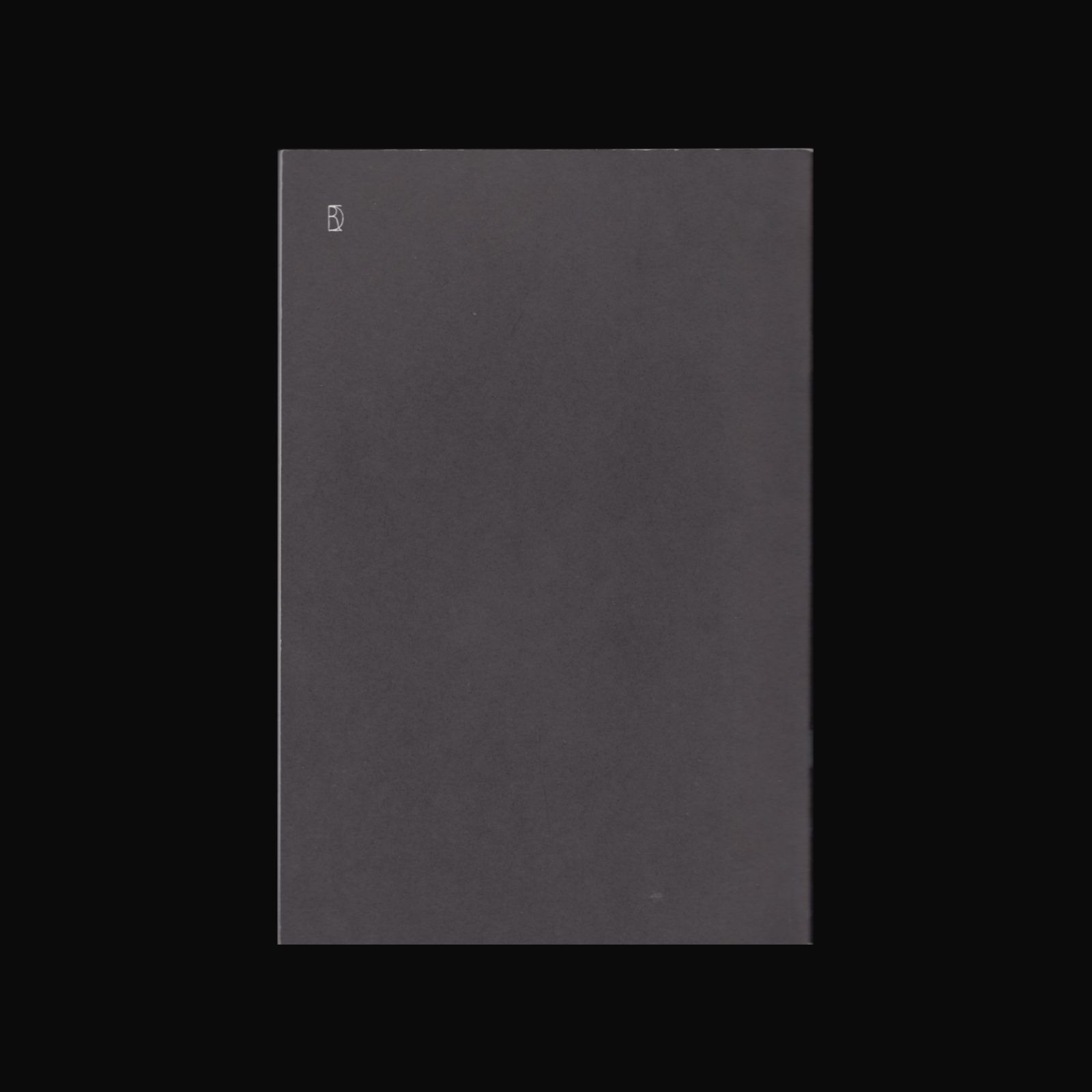
The Federal is a periodical of artist’s writings published by Brussels gallery, Tulips and Roses.
Contributors to this issue: Christopher Fraga, Elena Narbutaite, Jonas Žakaitis, Gintaras Didžiapetris in conversation with Paul Sietsema, and Jonas Žakaitis in conversation with Christopher Witmore